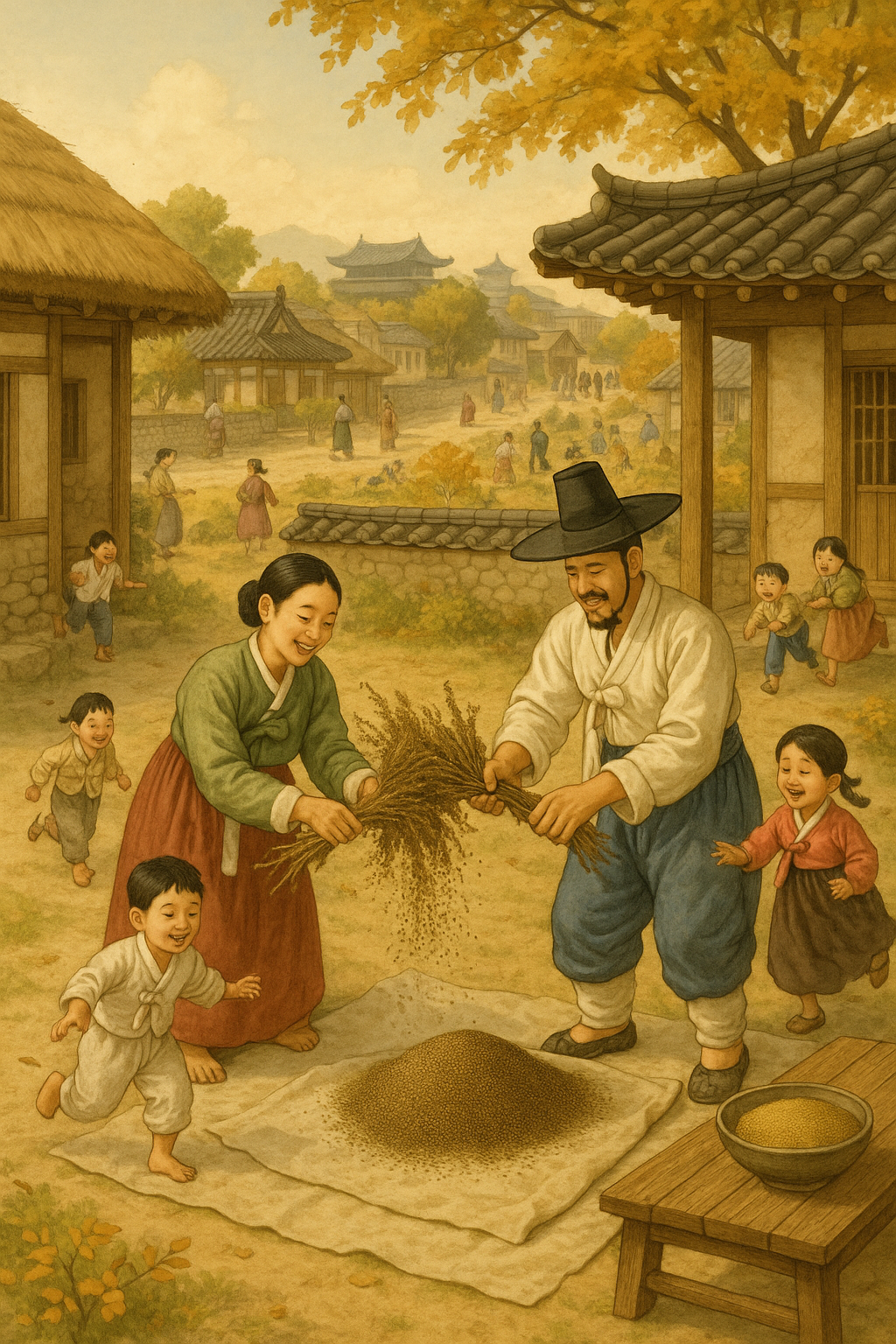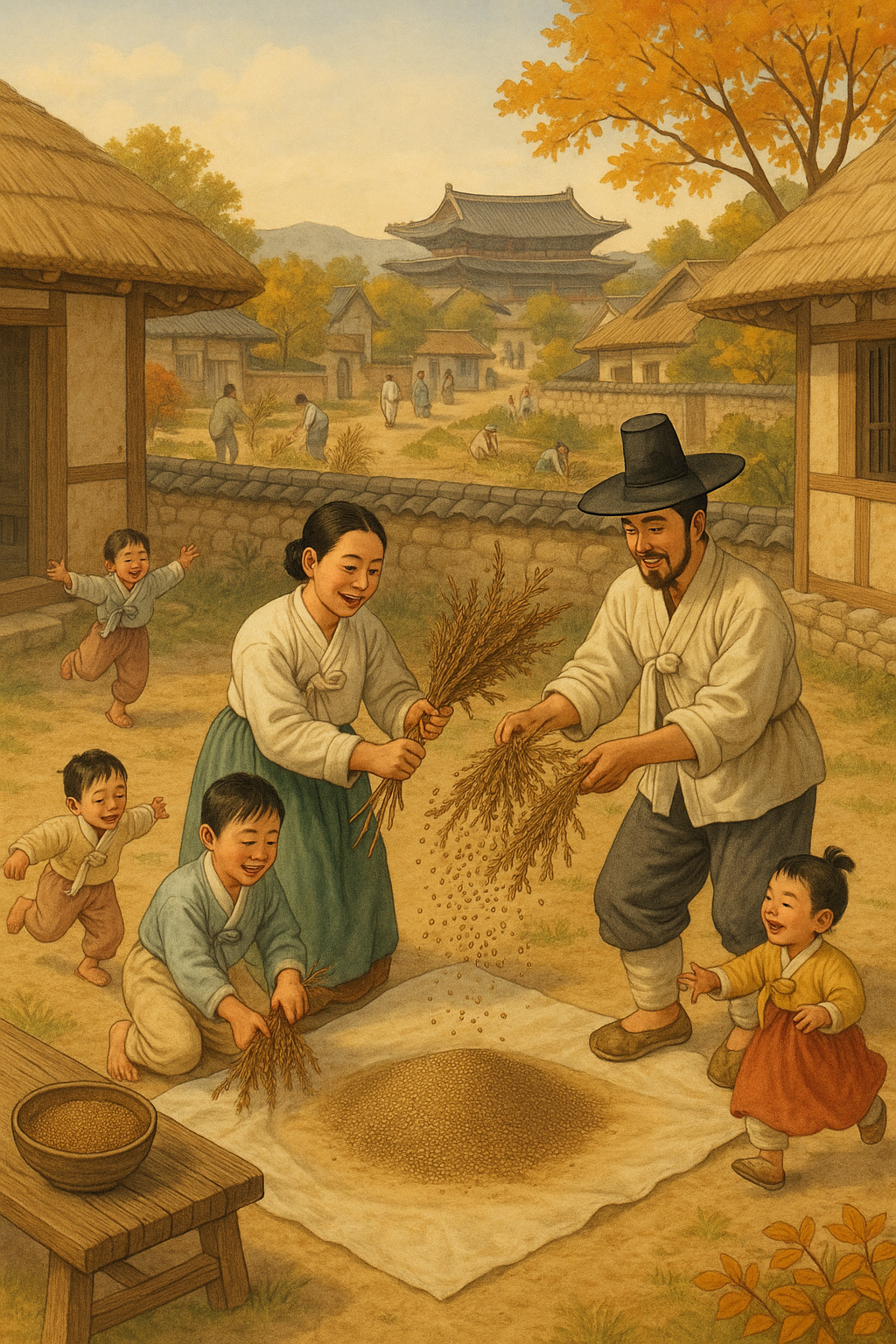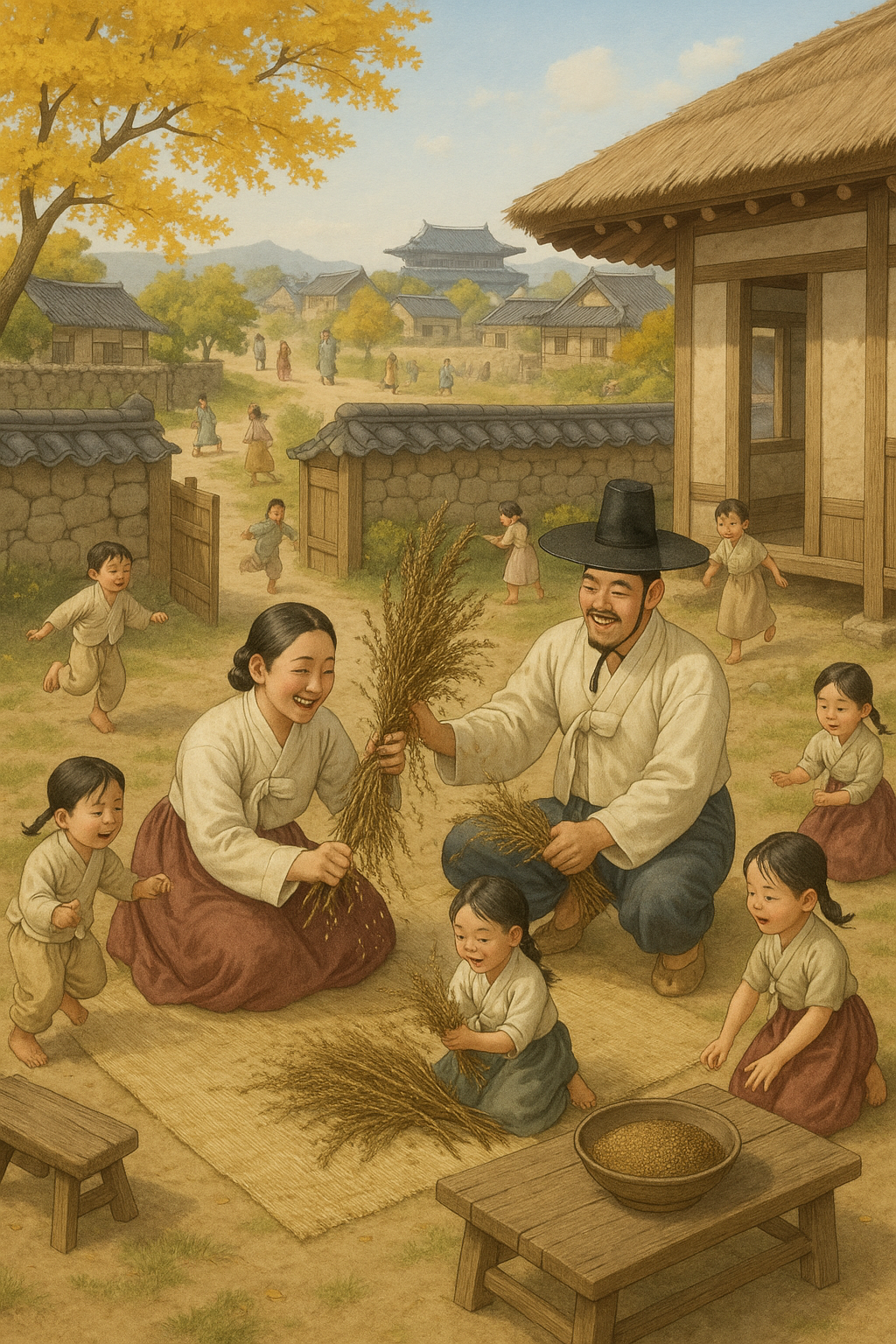The Timeless Tradition of Sesame Harvesting in Korea
In Korea, sesame has long been a treasured crop, deeply woven into the country’s culinary traditions. In the past, sesame was typically grown by small farmers, often on modest family plots. The plants were carefully tended throughout the summer, and when the seed pods began to dry and turn brown, it signaled harvest time. Farmers would cut the stalks by hand, tie them into bundles, and hang them upside down to dry fully in the sun. Once dried, the bundles were gently beaten or shaken to release the tiny seeds, which were then winnowed to remove any debris. This careful, labor-intensive process ensured high-quality sesame seeds, which were roasted and pressed to create the fragrant sesame oil so central to Korean cooking. Even today, sesame farming continues in Korea, preserving a connection to these age-old agricultural traditions while providing one of the most beloved and healthy ingredients in Korean cuisine.


